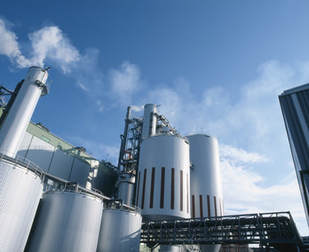Goal and StrategyDevelop next-generation chemical pulping processes that preserve fiber strength and pulp performance attributes while achieving one or more of the following:
|
R&D Needs
Break the bleachable-yield barrier
Publications related to APPTI R&D Needs
Publications and presentations from work with APPTI support (direct or indirect) – 2014 to date – Next-Gen Pulping
Break the bleachable-yield barrier
- Develop a cost-effective bleach sequence for higher Kappa pulping processes with similar or better loadings to the waste treatment plant compared to current bleach processes
- Develop non-chlorine-based lignin activators to improve O2 delignification selectivity
- Complete a computational chemistry study to screen categories of potential catalyst
- Identify higher-performing catalysts for strength, yield, and selectivity improvement
- Develop a chip activation method to facilitate pulping selectivity
- Explore oxidative alkaline pretreatments to remove a portion of hemicelluloses while activating lignin to subsequent kraft cooking conditions
Publications related to APPTI R&D Needs
Publications and presentations from work with APPTI support (direct or indirect) – 2014 to date – Next-Gen Pulping
- A.W. Rudie, P.W. Hart, “Catalysis: An Alternative to Kraft Pulping,” TAPPI Journal, Vol. 13, No. 10, 2014, pp. 13-20. DOI: https://doi.org/10.32964/tj13.10.13
- P.W. Hart, “Enhancing Yield Through High Kappa Pulping,” TAPPI Journal, Vol. 13, No. 10, 2014, pp. 33-35. DOI: https://doi.org/10.32964/tj13.10.33
- P.W. Hart, A.W. Rudie, “Anthraquinone – A Review of the Rise and Fall of a Pulping Catalyst,” TAPPI Journal, Vol. 13, No. 10, 2014, pp. 23-31. DOI: https://doi.org/10.32964/tj13.10.23
- T.T. Kwok, C.O. Luettgen, M.J. Realff, and A.S. Bommarius*, “Lignin value prior to pulping (LVPP): An advanced pulping concept”, TAPPI J. 2017, 16(10), 553-5; doi:
- NJ Chrisandina, TT Kwok, AS Bommarius, MJ Realff*, “Techno-Economic Analysis of Water Precipitation for Lignin Value Prior to Pulping”, Chem. Eng. Res. Des. 2019, 143, 4-10 (https://doi.org/10.1016/j.cherd.2018.10.042)
- TT Kwok, JR Bright, MJ Realff, and AS Bommarius*, “Pretreatment Efficacy and Lignin Solubility of Organic Solvents on Juvenile Slash Pine Chips for Lignin Value Prior to Pulping”, Bioresources 2019, 14(3), 5988-6003 (doi.org/10.15376/biores.14.3.5988-6003)
- TT Kwok, JR Bright, SR Vora, NJ Chrisandina, MJ Realff, AS Bommarius*, “Solvent selection for Lignin Value Prior to Pulping”, ChemSusChem 2020, 13, 267-273 (doi.org/10.1002/cssc.201901518)
- Cooper, Connor J., Patil, Ravikant, Bu, Lintao, Mou, Zhongyu, Turpin, David B., van Heiningen, Adriaan, Parks, Jerry M., and Knott, Brandon C.. Pretreatment with Sodium Methyl Mercaptide Increases Carbohydrate Yield during Kraft Pulping. United States: N. p., 2021. Web. https://doi.org/10.1021/acssuschemeng.1c04332.
- Naithani, Ved & Lucia, Lucian & Jameel, Hasan & Hart, Peter. (2020). Soybean Peroxidase Treatment of Ultra-High Kappa Softwood Pulp to Enhance Yield and Physical Properties. Tappi Journal. 19. 437-443. 10.32964/TJ19.9.437.
- Cooper CJ, Alam S, Nziko VdPN, Johnston RC, Ivanov AS, Mou Z, Turpin DB, Rudie AW, Elder TJ, Bozell JJ, Parks JM. Co(salen)-Catalyzed Oxidation of Lignin Models to Form Benzoquinones and Benzaldehydes: A Computational and Experimental Study ACS Sustainable Chemistry & Engineering. 8: 7225-7234. DOI: 10.1021/Acssuschemeng.0C01970
- Biannic, Berenger and Bozell, Joseph J. and Elder, "Steric effects in the design of Co-Schiff base complexes for the catalytic oxidation of lignin models to para-benzoquinones", Green Chem., 2014, vol 16(7) pages 3635-3642, The Royal Society of Chemistry, doi =10.1039/C4GC00709C, url http://dx.doi.org/10.1039/C4GC00709C",
- Zuleta, Ernesto C., Goenaga, Gabriel A., Zawodzinski, Thomas A., Elder, Thomas, Bozell, Joseph J., “Deactivation of Co-Schiff base catalysts in the oxidation of para-substituted lignin models for the production of benzoquinones” Catal. Sci. Technol., 2020, Vol 10(2) pp 403-414. http://dx.doi.org/10.1039/C9CY02040C
- Rebecca E. Key; Thomas Elder; Joseph J. Bozell, “Steric effects of bulky tethered arylpiperazines on the reactivity of Co-Schiff base oxidation catalysts—a synthetic and computational study,” 2019, Tetrahedron, https://doi.org/10.1016/j.tet.2019.04.059
- Thomas Elder; Laura Berstis; Nele Sophie Zwirchmayr; Gregg T. Beckham; Michael F. Crowley, “The application of computational chemistry to lignin” 2017, Proceedings of the 19th International Symposium on Wood, Fibre and Pulping Chemistry

